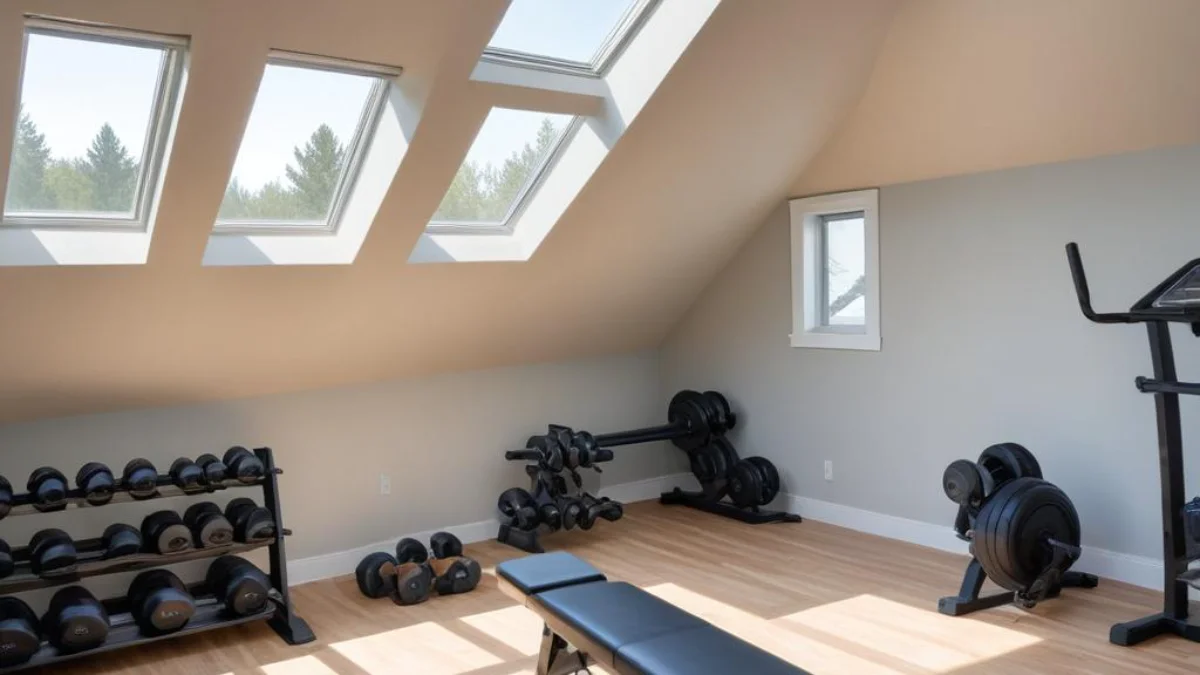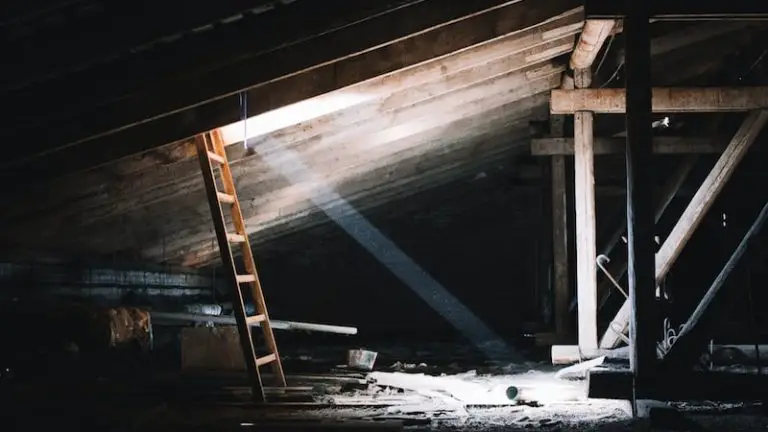Gym in Attic: Transform Your Unused Space Into a Fitness Haven
That dusty, forgotten space above your head could be the key to unlocking your fitness goals. Many homeowners dream of a dedicated workout area but lack the spare room. The attic, often overlooked, presents a unique opportunity to create a private, convenient, and surprisingly effective home gym.
However, turning this raw space into a safe and functional gym in the attic requires careful planning. From structural integrity to climate control and proper flooring, there are several critical factors to consider before you start hauling up dumbbells. This guide will walk you through the entire process, addressing the common problems and providing expert solutions.
You'll Learn About
The Big Question: Can My Attic Handle a Home Gym?
The first and most crucial problem to solve is whether your attic is structurally sound enough to support a gym. The weight of workout equipment, combined with the dynamic movements of exercise, places significant stress on the floor joists. Ignoring this could lead to disastrous consequences for the structural integrity of your home.
Most attic floors are designed to handle a “live load” of about 30-40 pounds per square foot (PSF), intended for storage. A home gym, with heavy equipment and a person exercising, can easily exceed this. Dropping a heavy barbell or the repetitive impact from a treadmill can create concentrated loads far beyond the original design specifications.
Assessing Your Attic’s Strength
Before you buy any equipment, you must assess your attic’s load-bearing capacity. Look at the size and spacing of your floor joists. Generally, wider and more closely spaced joists can support more weight. You’ll likely need to consult a structural engineer for a professional evaluation.
An engineer will inspect your attic’s framework and provide a definitive answer on its capacity. They can also recommend necessary reinforcements, such as adding sister joists or installing support beams, to ensure your gym in the attic is safe and secure. This is not a step to skip or guess on.
Solving the Attic Environment: Climate and Comfort
Attics are notoriously prone to extreme temperatures, becoming sweltering in the summer and frigid in the winter. Working out in such an uncomfortable environment is not only unpleasant but can also be unsafe. Proper insulation, ventilation, and climate control are non-negotiable for a functional attic gym.
Without adequate insulation, any attempt to heat or cool the space will be inefficient and costly. Poor ventilation can also lead to moisture buildup and stale air, creating an unhealthy workout environment. Some homeowners even find their utility systems, like a heat pump water heater needing specific ducting, are housed in or near the attic, which can affect the space’s temperature.
Creating a Comfortable Workout Zone
Start by upgrading your attic’s insulation. Proper insulation in the floor, walls, and ceiling will create a thermal barrier, making it easier to maintain a stable temperature. Spray foam insulation is often an excellent choice for attics as it provides a superior air seal.
Next, address ventilation. Installing a vent fan, a window, or even a ductless mini-split system can provide both air circulation and climate control. A mini-split is a fantastic all-in-one solution, offering both heating and cooling to keep your gym comfortable year-round. This investment will pay dividends in the usability of your space.

Choosing the Right Equipment and Flooring for Your Attic Gym
Once the structural and environmental issues are solved, the fun part begins: outfitting your gym. However, the unique constraints of an attic—sloped ceilings, limited space, and weight restrictions—will influence your choices. You can’t simply move a commercial gym’s worth of equipment into the space.
Flooring is especially critical. It needs to protect the subfloor from impact, absorb sound, and provide a stable surface for exercise. The right flooring can make a huge difference in the safety and longevity of your gym in the attic.
Smart Equipment Selection
Focus on versatile, space-saving equipment. Adjustable dumbbells, resistance bands, a TRX suspension trainer, and a foldable weight bench are excellent starting points. These items provide a full-body workout without consuming massive amounts of floor space or adding excessive weight.
For cardio, consider a spin bike or a rowing machine, which often have a smaller footprint and lower impact than a treadmill. Always check the weight of any machine you’re considering and place the heaviest items directly over load-bearing walls or reinforced joists whenever possible.
The Best Flooring for an Attic Gym
The gold standard for any home gym floor is heavy-duty rubber matting. Interlocking rubber tiles are a perfect solution for an attic. They are easy to install, provide excellent shock absorption to protect your floor structure, and help dampen noise—a key consideration for anyone living below.
Look for rubber flooring that is at least 3/8-inch thick for general fitness and 1/2-inch to 3/4-inch thick for areas where you might be dropping weights. This is a crucial investment in protecting your home. It’s as important as knowing how to handle home maintenance tasks like a fireplace gas valve cover plate removal; it’s about protecting the structure.
| Factor | Problem | Solution |
|---|---|---|
| Structural Integrity | Attic floor not designed for heavy, dynamic loads from gym equipment and exercise. | Consult a structural engineer. Reinforce floor joists by sistering or adding support beams. |
| Climate Control | Extreme heat in summer and cold in winter make the space unusable. | Install or upgrade insulation (spray foam is ideal). Add ventilation and a dedicated heating/cooling source like a ductless mini-split system. |
| Flooring | Subfloor is vulnerable to damage from dropped weights and impact. Noise transfers to rooms below. | Install heavy-duty, shock-absorbent rubber flooring (interlocking tiles are best). Use a minimum thickness of 3/8 inch. |
| Headroom & Space | Sloped ceilings and limited floor space restrict movement and equipment choice. | Plan your layout carefully. Use the tallest areas for standing exercises and place benches or floor equipment under slopes. Choose compact, multi-functional equipment. |
| Access | Difficult to get bulky equipment up narrow attic stairs or through a small hatch. | Measure access points before purchasing equipment. Opt for equipment that can be disassembled and reassembled in the space. |
Designing Your Attic Gym Layout
A well-designed layout is essential for maximizing a small or awkwardly shaped attic. The sloped ceilings and potential for support columns can be challenging, but with smart planning, they can be worked around effectively.
The goal is to create a safe, functional, and motivating space. You need clear pathways and dedicated zones for different types of exercises, from strength training to cardio and stretching. Rushing this stage can lead to a cramped and impractical workout area.
Maximizing Your Space
Start by measuring your attic’s usable floor space, paying close attention to ceiling height. Use the areas with the highest clearance for activities that require standing, like overhead presses or jumping rope. Place benches, floor mats, and storage under the lower, sloped sections of the ceiling.
Use vertical space for storage with wall-mounted racks for bands, foam rollers, and yoga mats. This keeps the floor clear and reduces clutter. When it comes to systems in your home, being efficient is key, whether it’s your gym layout or troubleshooting a Navien tankless water heater temperature fluctuation.
Lighting and Aesthetics
Good lighting can transform a dark, dreary attic into an inviting workout space. If you have a window, maximize the natural light. If not, install bright, energy-efficient LED lighting. A well-lit space feels safer and more motivating.
Paint the walls a light color to make the room feel bigger and more open. Adding a large mirror can also create the illusion of more space while being functional for checking your form during exercises. These small touches can make your gym in the attic a place you genuinely want to be.
Final Checklist for Your Attic Gym Conversion
Transforming your attic is a significant project, but the reward is a dedicated fitness space tailored to your needs. By addressing the core problems of structural support, climate, and flooring, you lay the foundation for a successful conversion. With smart equipment choices and a thoughtful layout, your attic can become the best home gym you’ve ever had.
Remember to prioritize safety above all else. The initial consultation with a structural engineer is the most important investment you will make in this project. Once that’s done, you can confidently build the attic gym of your dreams, adding incredible value and functionality to your home.

